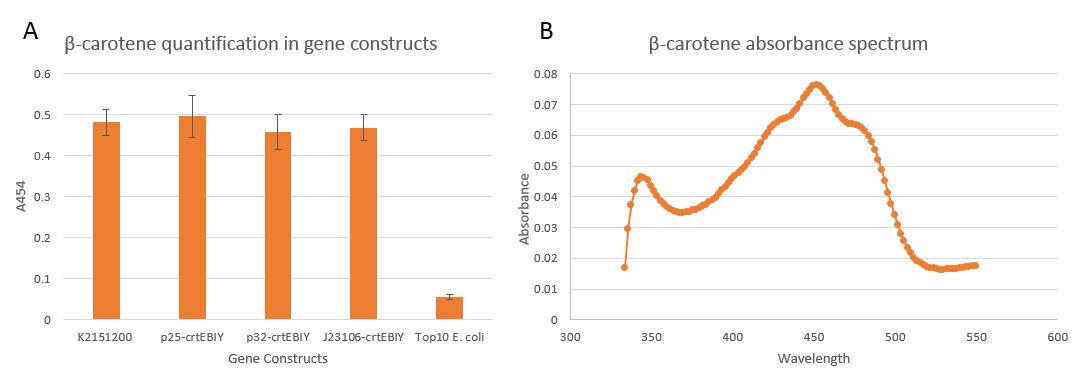As proof of concept that we could synthesise β-carotene in bacteria, we transformed E. coli with our crtEBIY BioBrick [http://parts.igem.org/Part:BBa_K2151200 BBa_ K2151200] ligated to three different native S. thermophilus promoters . We then quantified the amount of β-carotene produced by transformant E. coli. We did this by acetone extraction, followed by measuring the absorbance of the acetone fragment, shown in Figure 1A. The absorbance was measured at 454 nm because that is the peak of the β-carotene absorbance spectrum (Figure 1B).
This experiment confirmed the production of β-carotene by our transformant E. coli, as the empty cells have a lower absorbance than the cells with the construct. The absorbance spectrum confirmed that K2151200 produced β-carotene, as the absorbance spectrum is highly similar to the established absorbance spectrum [1].
The levels of β-carotene produced from our crtEBIY construct were assumed to contain the promoter sequences we thought they did. After sequencing them, we found out that unfortunately they did not actually possess them. To increase the quantity of β-carotene made in the future, a promoter could be utilised.
In summary, we have produced β-carotene in E. coli as a model for what we had planned to achieve in S. thermophilus. The BioBrick constructs we produced could be ligated into a plasmid suitable for S. thermophilus and therefore used to produce β-carotene through culturing of this organism.



